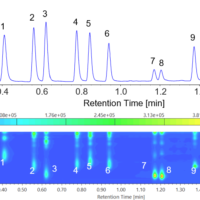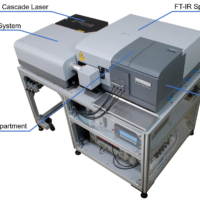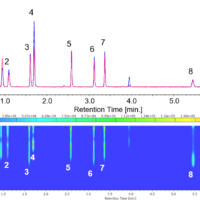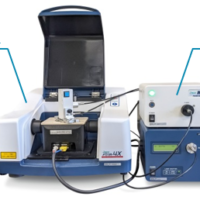Introduction
Food colorings are additives that can be both chemically synthesized and natural. For consumer safety, the uses of many of these food colorings are regulated by the FDA (Food and Drug Administration).
In this application note food coloring in powdered fruit juice was analyzed using Ultra High-performance Liquid Chromatography (UHPLC) with PDA detector with high speed data acquisition (100Hz).
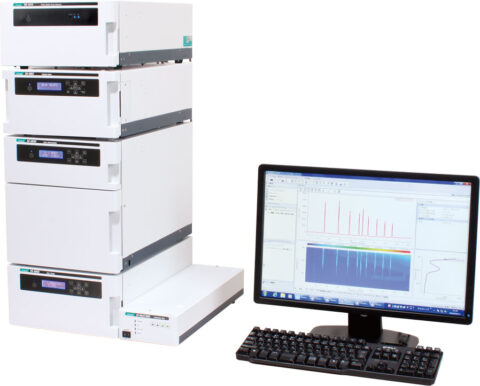
Experimental
Conditions
Column : X-Press Apk V-C18 ( 2.0 mm I.D. x 50 mm L, 2.0µm)
Eluent A : 0.01 M Ammonium acetate/ Acetonitrille (95/5)
Eluent B : Acetonitrille
Gradient Condition (A/B): 0 min (100/0) -> 1.0min (50/50) -> 2.0 min (50/50) -> 2.05 min (10/90) -> 2.5 min (10/90) -> 2.55 min (100/0), 1 cycle ; 5 min
Flow Rate : 0.4 mL/min
Column Temperature : 40 degree C
Wavelength : 200 – 900 nm
Injection Volume : 1 µL
Samples: 9 different food coloring standards
Results
The chromatogram of a food coloring standard mixture together with a contour plot is shown in figure 1. Excellent separation of nine commonly used food colorings was obtained in under 2 minutes.
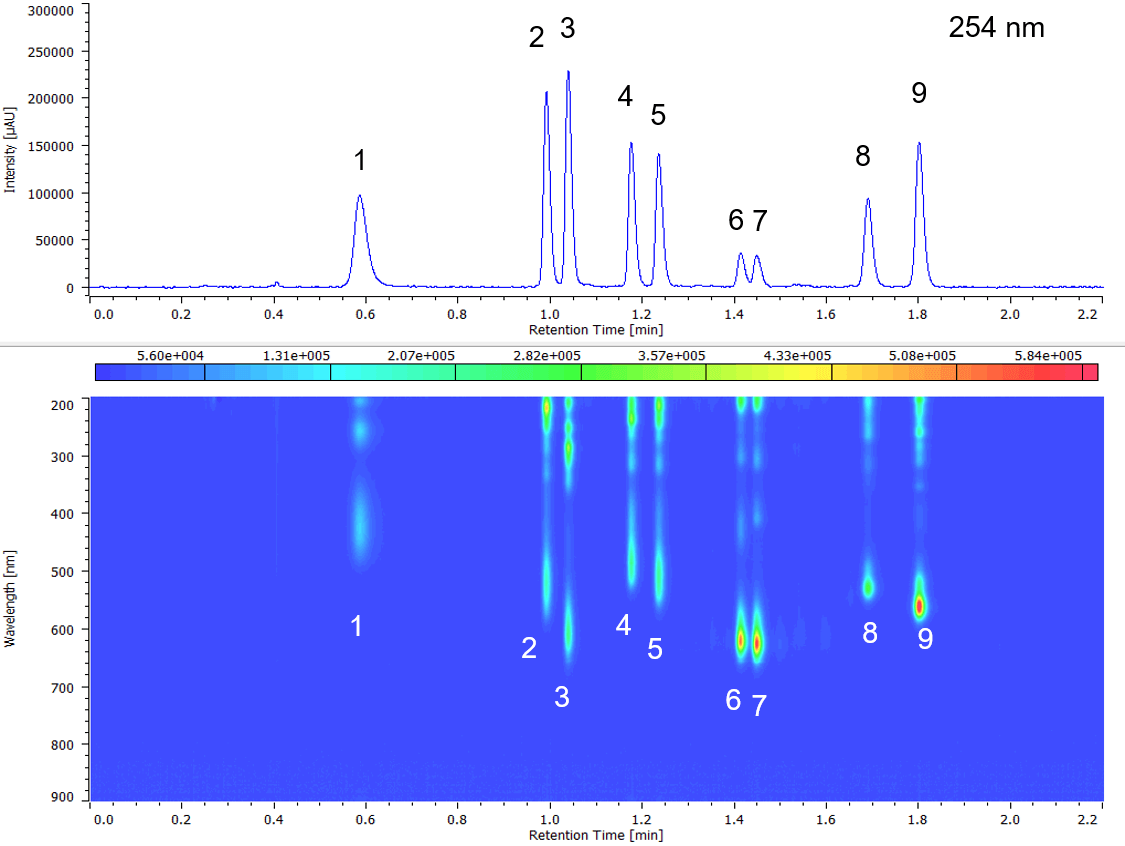
Figure 1. Chromatogram of a food coloring standard mixture (1: Tartrazine (Y4), 2: Amaranth (R2), 3: Indigotine (B2), 4: Sunset Yellow FCF (Y5), 5: Allura Red AC (R40), 6: Fast Green FCF (G3), 7: Brilliant Blue FCF (B1), 8: Erythrosine (R3), 9: Acid Red (R106))
The on-peak spectra of the food coloring standard mixture are shown in figure 2. Representative spectra of each component was obtained and added to a food colorings library in Chrom Nav.
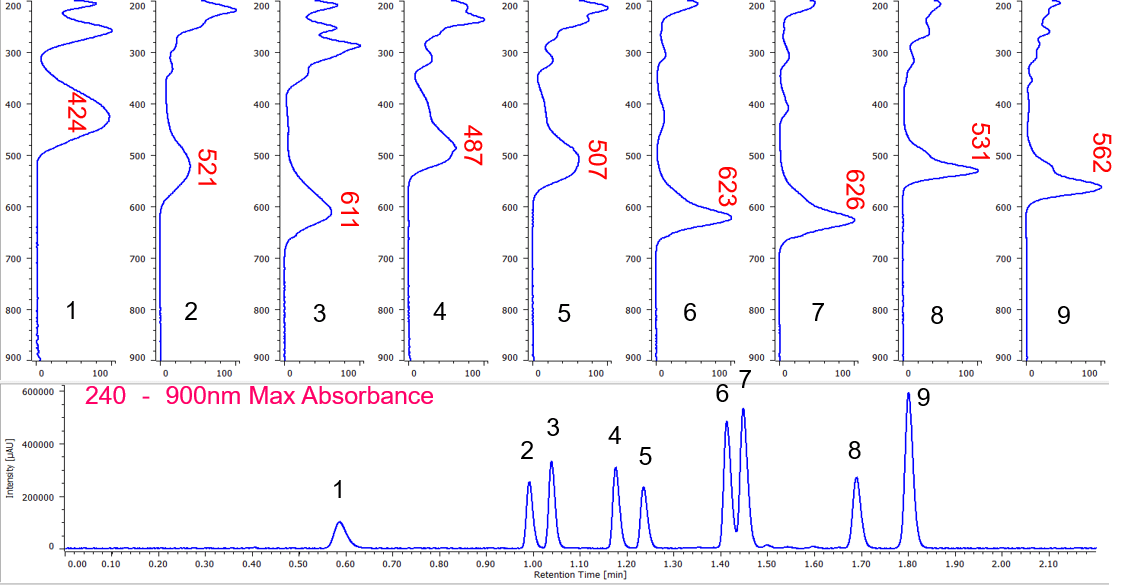
Figure 2. On-peak spectra of the food coloring standard mixture and maximum absorbance plot (1: Tartrazine (Y4), 2: Amaranth (R2), 3: Indigotine (B2), 4: Sunset Yellow FCF (Y5), 5: Allura Red AC (R40), 6: Fast Green FCF (G3), 7: Brilliant Blue FCF (B1), 8: Erythrosine (R3), 9: Acid Red (R106))
The chromatogram of a sample of powdered juice together with a contour plot are shown in figure 3 and the Spectral Library search results of each peak are shown in figure 4.
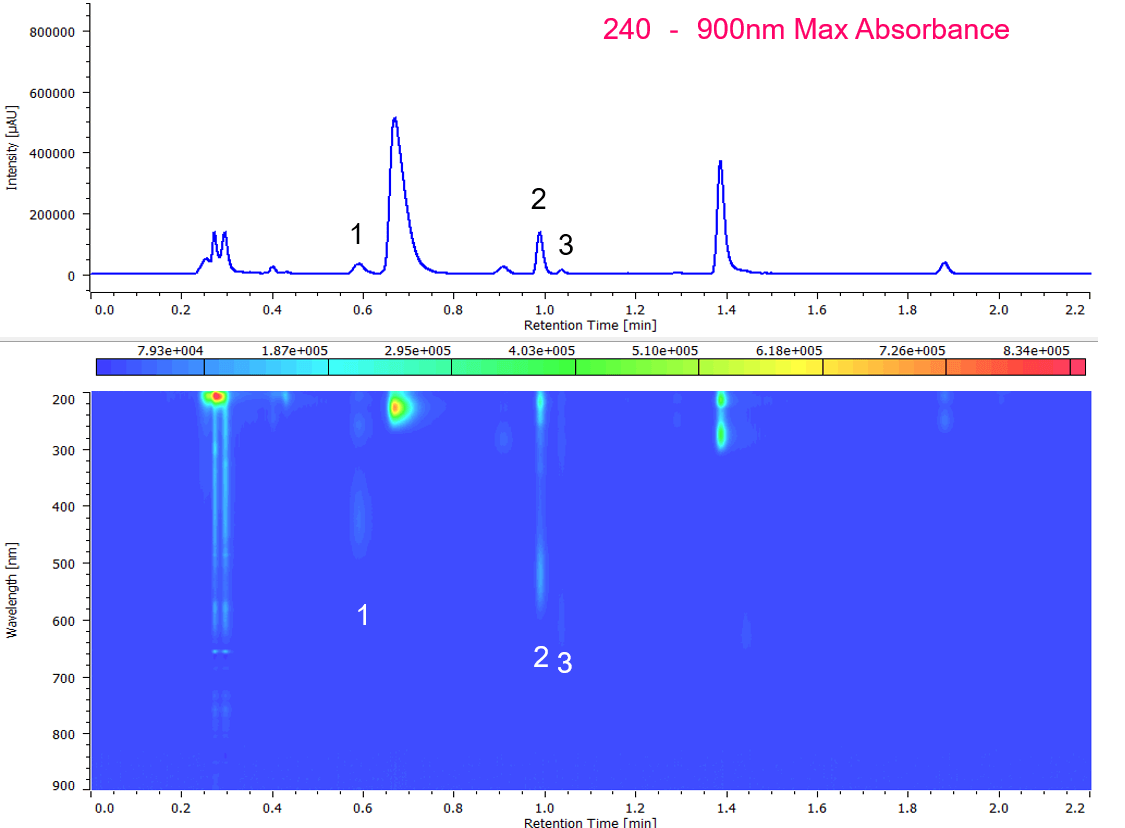
Figure 3. Chromatogram of components in powder juice (1:Tartrazine (Y4), 2:Amaranth (R2), 3: Indigotine (B2))
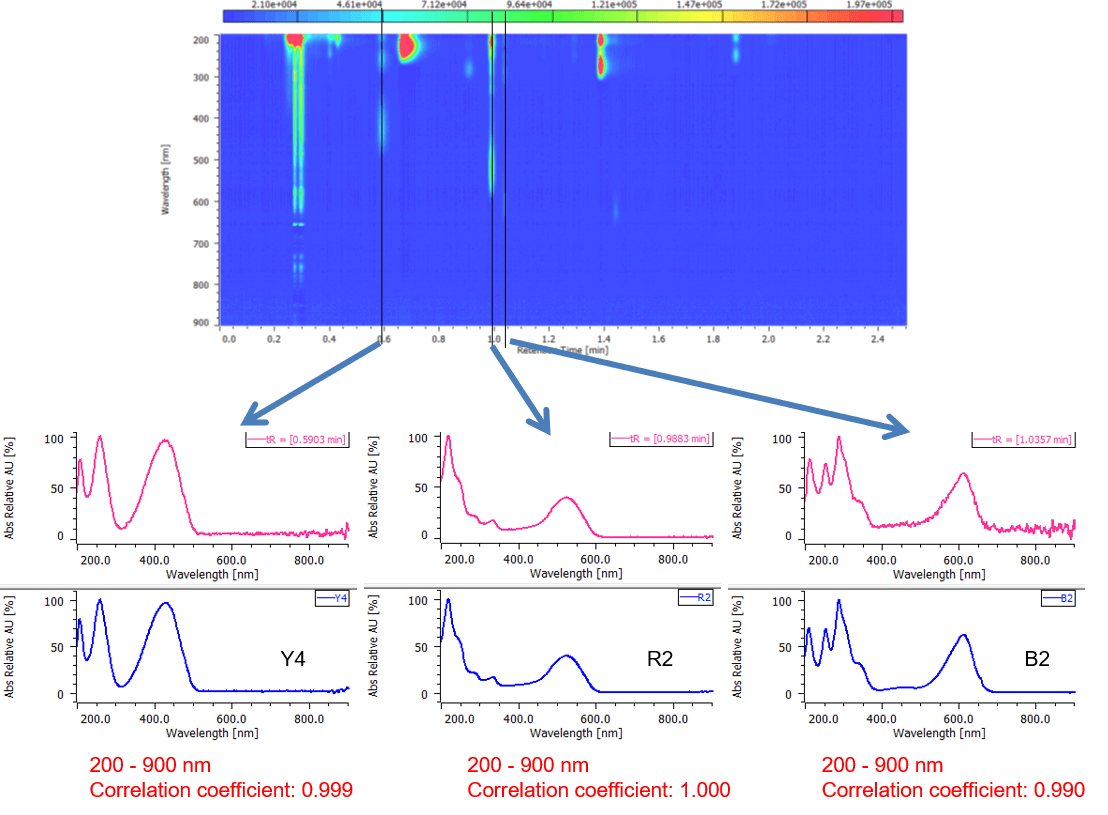
Figure 4. Spectral search results of components in powdered juice
Conclusion
Correlations for both the retention time and the spectral library search (0.99)provide a good match for three of the colorings added to the fruit juice Tartrazine (Y4), Amaranth (R2) and Indigotine (B2). UHPLC system offers a fast and reliable system for the analysis of food colorings in a regulated laboratory.

